
دنیای مهندسی سازه های دریایی
Offshore Structures
دنیای مهندسی سازه های دریایی
Offshore StructuresCorrosion control for offshore structures,by Ramesh Singh, Elsevier,2014
This is book Corrosion control for offshore structures,by Ramesh Singh, Elsevier,2014
This file is password
Password: CE-MS MS.c Bijan Mohammadi
All text & change the color to use to download it
Download/دانلود Password/کلمه عبور
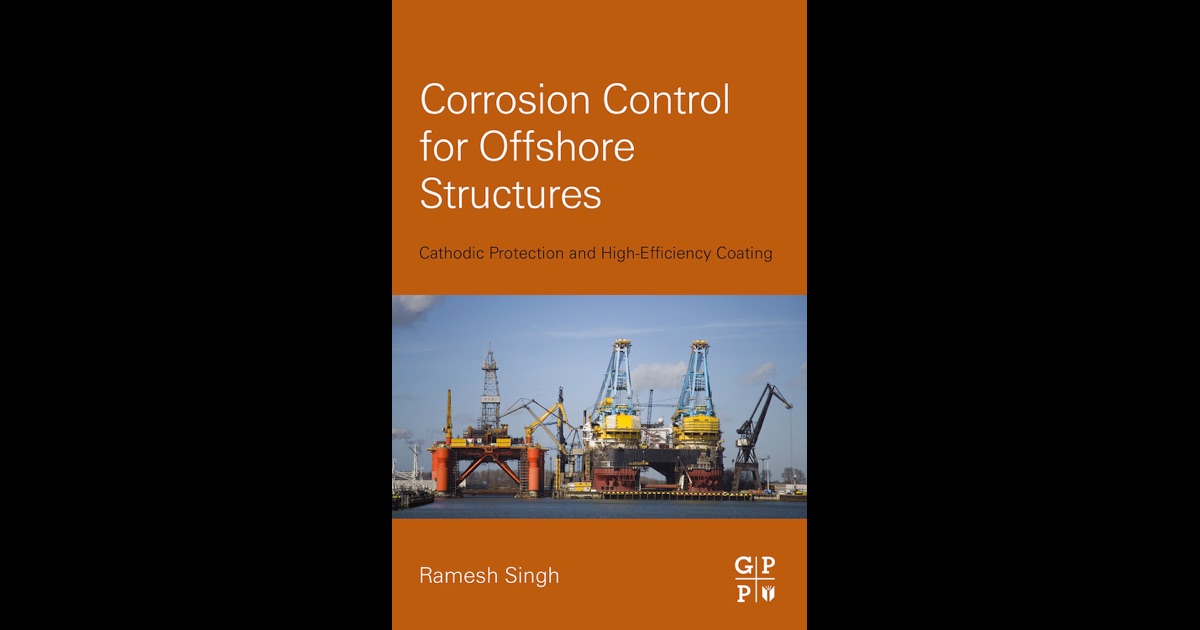
Description
A variable game changer for those companies operating in hostile, corrosive marine environments, Corrosion Control for Offshore Structures provides critical corrosion control tips and techniques that will prolong structural life while saving millions in cost. In
this book, Ramesh Singh explains the ABCs of prolonging structural life
of platforms and pipelines while reducing cost and decreasing the risk
of failure. Corrosion Control for Offshore Structures places
major emphasis on the popular use of cathodic protection (CP) combined
with high efficiency coating to prevent subsea corrosion. This reference
begins with the fundamental science of corrosion and structures and
then moves on to cover more advanced topics such as cathodic protection,
coating as corrosion prevention using mill applied coatings, field
applications, and the advantages and limitations of some common coating
systems. In addition, the author provides expert insight on a number of
NACE and DNV standards and recommended practices as well as ISO and
Standard and Test Methods. Packed with tables, charts and case studies, Corrosion Control for Offshore Structures is a valuable guide to offshore corrosion control both in terms of its theory and application.
Prolong
the structural life of your offshore platforms and pipelines Understand
critical topics such as cathodic protection and coating as corrosion
prevention with mill applied coatingsGain expert insight on a number of
NACE and DNV standards and recommended practices as well as ISO and
Standard Test Methods.
Contents
Chapter 1-Need for the Study of Corrosion
Chapter 2-Corrosion Principles and Types of Corrosion
Chapter 3-Corrosion Control and Monitoring
Chapter 4-Anode Materials
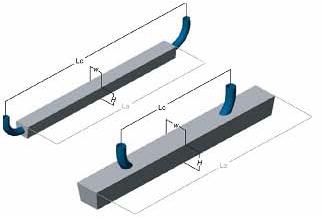
Chapter 5-Anode Testing and Quality Control
Chapter 6-Offshore Structures
Chapter 7-Cathodic Protection of Offshore Pipeline Risers and Associated Equipment
Chapter 8-Coating for Corrosion Prevention
Chapter 9-High-Efficiency Coating and Cathodic Protection
Chapter 10-Testing of High-Efficiency Coating Materials and Their Efficiency
Chapter 11-Introduction to Retrofitting
Chapter 12-Corrosion Control for Existing Offshore Pipelines
Chapter 13-Corrosion and CP System Assessment Methods
Chapter 14-New Approach to Cathodic Protection Design for New Pipelines
Chapter 15-Attenuation Modeling for Offshore Pipelines
Chapter 16-International Bodies that Address Corrosion
Chapter 17-Commonly Used Constants, Quantities, and Symbols
آر او وی ها (ROV) یا چشم دریا /Remotely Operated Vehicle ROV
این فیلم معرفی دستگاه ROV (چشم دریا) می باشد.
This is introduces The Remotely Operated Underwater Vehicle or Remotely Operated Vehicle (ROV
وسیله نقلیه قابل کنترل از راه دور زیر دریایی ، آر او وی ها (ROV) یا چشم دریا چیست؟
در مورد اسم این وسیله باید گفت بهترین اسم چشم دریا است چون که تجهیزات دیگری با کاربردهای گوناگون ولی پیشرفته تر بنام های AUV و UUV وجود دارد ROV مخفف Remotely Operated underwater Vehicleیا Remotely Operated Vehicle و AUV مخفف Autonomous Underwater Vehicle و UUV مخفف Unmanned Underwater Vehicles
Nereid Under Ice مخفف Nereid UIاست.

برخی از عزیزان این آنها را به عنوان ربات های زیر آبی یاد کنند ولی تجهیزات گسترده به صورت ربات ها در زیر دریا به کار می رود با کارایی های متفاوت مانند این عکس
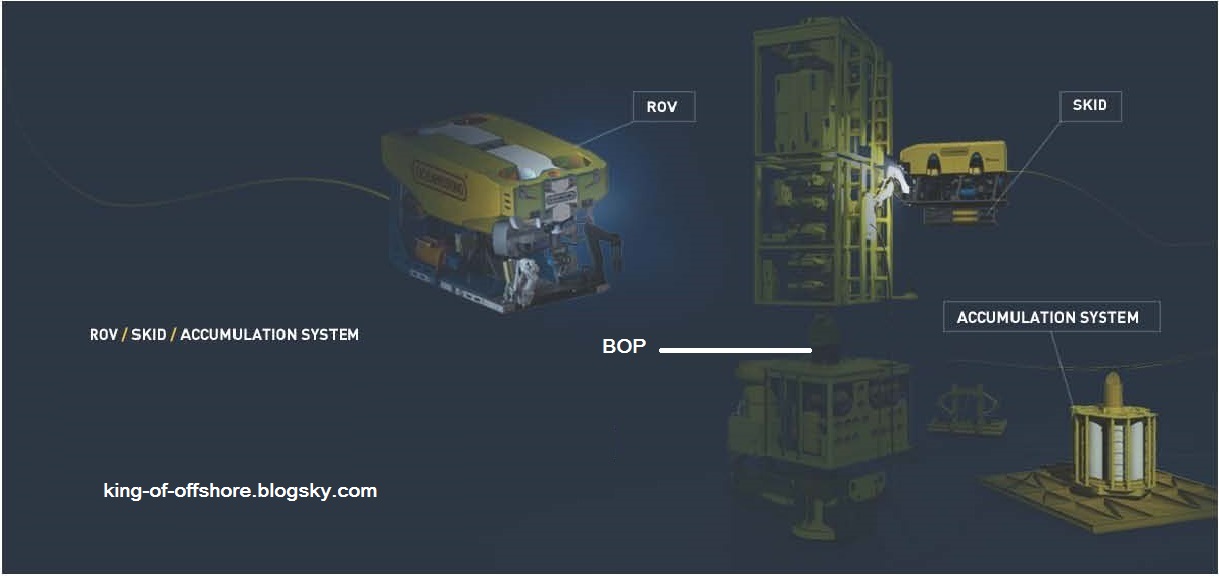
منابع و صنایع دریایی نفش و تأثیر مهمی در زندگی انسانها دارند. به همین دلیل مطالعه و بررسی بسیاری از مسائل مهندسی، زیستشناسی، تجاری و نظامی مرتبط با دریا، همواره مورد توجه محققان بودهاست. با توسعه و گسترش صنایع دریایی و علوم مرتبط با دریا، امروزه برای انجام بسیاری از کاربردهای کشف و استخراج منابع زیرآبی، بازرسی و جمعآوری اطلاعات زیست محیطی و تحقیقاتی و نیز نصب، تعمیر و نگهداری سازههای ساحلی و دریایی، به کارگیری تکنولوژیِ خاص و جدیدی برای پاسخگویی به نیازهای روزافزون پیش آمده، ضروری مینماید. استفاده از وسائل و ابزارآلات مهندسی که قابلیت به کارگیری در اعماق آب را دارند و کاربریهای متنوع در فضا و بستر دریا را ممکن میسازند، چنان در سالهای اخیر توسعه و گسترش یافته که توانایی بشر را در بررسی، تحقیق و کار در اعماق دریا، به شدت متحول نمودهاست.
استفاده از تجهیزاتی که بتوان آنها را بدون حضور مستقیم نیروی انسانی و از راه دور هدایت و کنترل نمود، کاربردهایی فراوانی یافتهاند و در بسیاری از موارد به جزء جدا نشدنیِ کاربردهای تجاری و صنعتی بدل گشتهاند، به گونهای که انجام بسیاری از پروژههای مهندسی و تحقیقاتی بدون آنها امکانپذیر نیست. این تجهیزات شامل رباتها و بازوهای مکانیکی هستند که قابلیت انجام عملیات از پیش برنامهریزی شده و نیز اجرای فرامین لحظهای کاربر را به نحوی مناسب و دقیق، دارند. در صنایع زیردریایی بنا به دلایلی که گفته شد، استفاده از تکنولوژی رباتیک در سالهای اخیر توسعه و گسترش فراوانی یافته و در بسیاری از شاخههای علوم و مهندسیِ دریا نقش مهم و اساسی پیدا نمودهاند. بهبود و افزایش کارایی این تکنولوژی نیازمند افزایش مطالعات مهندسی بر روی تمامی انواع و اجزای سیستمها و رباتهای زیرآبی، جهت انجام عملیات پیچیدهتر و فرامین متنوعتر است. به این منظور حجم عظیمی از مطالعات و تحقیقات مهندسی در سراسر جهان و در رشتهها و تخصصهای متفاوت بر این موضوع متمرکز شدهاند
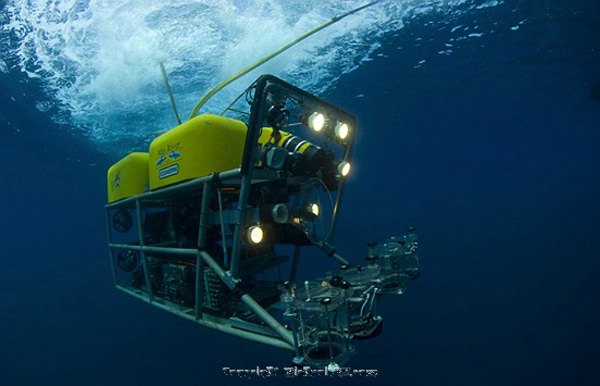
ROV (چشم دریا)
وسائط نقلیه کنترل از راه دور، آراووی ها یا چشم دریا، روبات هائی هستند که در زیر آب توسط یک کنترل کننده هدایت می شوند. این آر او وی ها بوسیله یک رشته کابل با سطح آب در ارتباط می باشند. این کابل شامل یک رشته برای برقراری ارتباط، یک رشته برای ارسال انرژی و یک رشته برای انتقال اطلاعات می باشد. تمام آر او وی ها برای دید در زیر آب دارای ابزار بصری مانند دوربین می باشند. علاوه برآن بسته به نوع کاربردشان دارای ابزارهای دیگری نیز هستند. صنعت نفت و گاز فراساحل همراه با پیشرفت فنآوری و افزایش کارآئی آر او وی ها روز به روز در تمام جهان برای عملیات حفاری و انجام امور خدمات مربوط به اکتشاف در آب های عمیق و اجرای پروژه ها بیشتر به استفاده از آر او وی ها روی آورده است.


در اندازه ها و ابعاد متفاوت و با گسترهٴ متنوعی از تکنولوژی ها و امکانات در سال های اخیر طراحی، ساخت، آزمایش و به کارگیری شده و حتی در برخی موارد به تولید صنعتی رسیده اند. انواع این ROV (چشم دریا) از نمونه های کوچک و ساده ای که صرفاً مجهز به دروبین فیلم برداری کوچکی هستند تا گونه های پیشرفته و بسیار پیچیده ای که در اعماق دریاها به انجام عملیات های متنوع و متعددی به کار گرفته می شوند
اجزای ROV (چشم دریا) عبارت اند از سیستم:
هدایتی جهت کنترل ربات، سیستم رانش، سیستم به آب انداختن، منابع تامین قدرت و کابل ارتباطی که توان لازم جهت عملکرد پروانه ها و نیز دستورات و سیگنال های کنترلی را به ربات و داده های تولید شده توسط حسگرها را به اپراتور در سطح دریا منتقل می کنند.
در اغلب موارد این کابل شامل غلاف مقاومی است که آن را در برابر بارهای وارده و نیز برخوردهای احتمالی با اجسام واقع در زیر آب و پارگی و خرابی ناشی از آن، محافظت می کندROV (چشم دریا)، می توانند دارای تجهیزات متفاوتی باشند که از دوربین تلویزیونی کوچک، که جهت مشاهدات ساده به کار می روند تا مجموعه های پیچیده ای از ابزارآلات مانند بازوهای مکانیکی ماهر متنوع و قدرت مند، دوربین های تلویزیونی و ویدئویی و دیگر ابزار و وسایل پیشرفته را در بر می گیرد

تاریخچه آر او وی
غواصان تا عمق مشخصی می توانند در آب فرو روند. رفتن غواصان به آب های عمیق خطرناک و غیر منطقی است. آر او وی ها در صنعت نفت و گاز بصورت ابزاری بی رقیب برای غلبه بر محدودیت های رفتن غواصان به آب های عمیق درآمده اند. اولین روباط های غواصی در اواسط سال های 1960 بصورت وسائط نقلیه سرنشین دار، یا اچ او وی ها، بکار گرفته شدند. گرچه اچ او وی ها تا حدی موفق بودند اما بزرگترین محدودیتشان وجود انسان در آن ها بود. آن ها بعلت وجود انسان قادر به رفتن در آب های عمیق بودند.
گرچه اولین آر او وی کابلی در سال 1953 توسط یک فرانسوی به نام دیمتری ربیکف ساخته شد، اما فن آوری آن توسط ارتش امریکا برای بازیابی اشیاء مفقود شده در دریا کامل شد. نیروی دریائی امریکا در سال 1966 با استفاده از آر او وی یک بمب اتمی را که در اثر سقوط هواپیما در آب های ساحلی اسپانیا مفقود شده بود پیدا نمود و در سال 1973 برای نجات جان دریانوردان یک زیردریائی که در آب های ایرلند غرق شده بود از این وسیله بهره گرفت.
What is remotely operated underwater vehicle or Remotely Operated Vehicle ROV

A remotely operated underwater vehicle, commonly referred to as an ROV, is a tethered underwater vehicle. They are common in deep water industries such as offshore hydrocarbon extraction. While the traditional abbreviation "ROV" stands for remotely operated vehicle, one must distinguish it from remote control vehicles operating on land or in the air. ROVs are unoccupied, highly maneuverable, and operated by a crew aboard a vessel. They are linked to the ship by either a neutrally buoyant tether or, often when working in rough conditions or in deeper water, a load-carrying umbilical cable is used along with a tether management system (TMS). The TMS is either a garage-like device which contains the ROV during lowering through the splash zone or, on larger work-class ROVs, a separate assembly which sits on top of the ROV. The purpose of the TMS is to lengthen and shorten the tether so the effect of cable drag where there are underwater currents is minimized
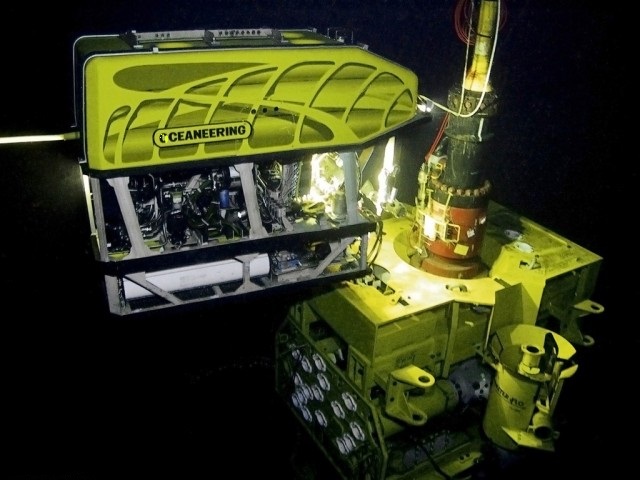
The umbilical cable is an armored cable that contains a group of electrical conductors and fiber optics that carry electrical power, video, and data signals between the operator and the TMS. Where used, the TMS then relays the signals and power for the ROV down the tether cable. Once at the ROV, the electrical power is distributed between the components of the ROV. However, in high-power applications, most of the electrical power drives a high-power
Electrical motor which drives a hydraulic pump. The hydraulic pump is then used for propulsion and to power equipment such as torque tools and manipulator arms where electrical motors would be too difficult to implement subsea. Most ROVs are equipped with at least a video camera and lights. Additional equipment is commonly added to expand the vehicle’s capabilities. These may include sonars, magnetometers, a still camera, a manipulator or cutting arm, water samplers, and instruments that measure water clarity, water temperature, water density, sound velocity, light penetration, and temperature
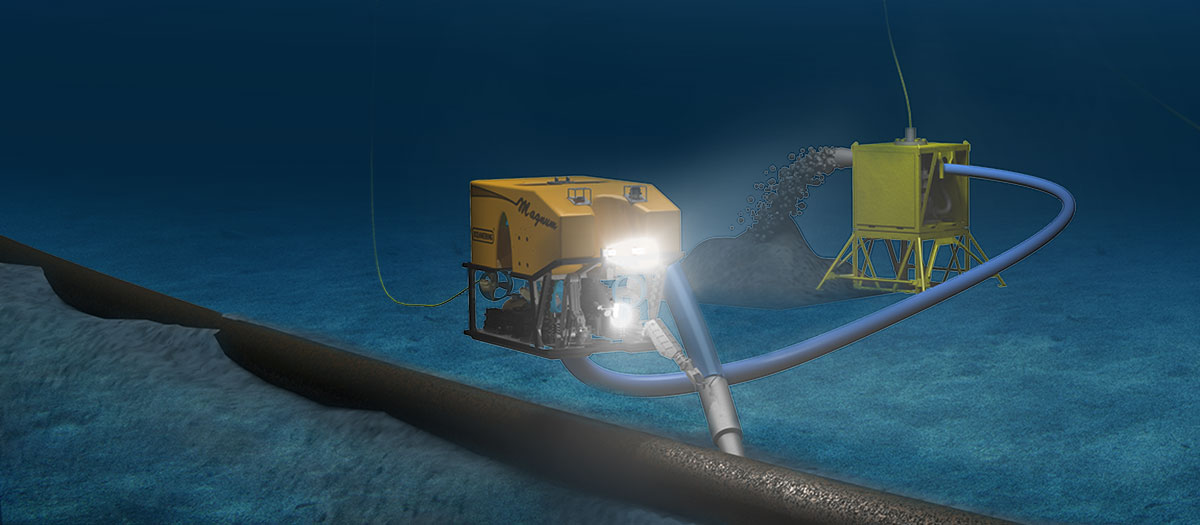
History OF THE ROV
Human divers can only submerge to certain depths and the skill and danger involved makes deepwater diving unrealistic developed to overcome the limitations of human subsea divers ROVs have become an indispensable tool to the offshore oil and gas industry
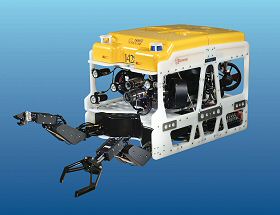
The first iteration of the robotic diving concept was the Human
Occupied Vehicle, or HOV, which was developed in the mid1960s.
While Dimitri Rebikoff is credited with building the first tethered ROV in 1953, the US military expanded on the technology to retrieve equipment lost at sea. In 1966, the US Navy recovered an atomic
bomb lost in a plane crash offshore Spain using an ROV, and in 1973,
An ROV was used to save sailors in a sunken submersible offshore
Ireland
The commercial world quickly began manufacturing preliminary
versions of ROVs for the offshore oil and gas industry. Although these
products were not as successful initially, the technology has come a
long way, and now ROVs are regularly used offshore for petroleum
developments and drilling, military and science efforts,
as well as underwater cable endeavors

Types Of ROVs

ROVs can vary in size from that of a bread box to a large van. The
functions ROVs perform can range from simply carrying a camera to
observe subsea environments to housing multiple agile arms to
perform numerous functions subsea.

Used primarily for observation and inspection operations, Small
Electric Vehicles are the tiniest version of ROVs. These robots simply
carry a single camera and are deployed in waters no greater than 984
feet (300 meters) deep
High Capability Electric ROVs are larger versions of their Small
Electric Vehicle cousins

These ROVs are able to dive to depths up to
20,000 feet (6,096 meters), but they are still only equipped with video cameras and are unable to perform many other tasks because their electricity supply limits them. Primarily used by the science and military industries, High Capability Electric ROVs are unable to perform any heavy tasks typically required by the oil and gas industry

The next iteration of ROV, the Work Class Vehicle is powered electrically and hydraulically, enabling some more serious work subsea. Although payload and lift capabilities are restricted, the Work
Class Vehicle ROV does generally include a seven function manipulator and a five function grabber.
Most of this class of ROV is deployed in the drilling and construction support sector, as well as
pipeline inspection

The most advanced version of ROV is the Heavy Work Class Vehicle
ROV. This kind of ROV is capable of working in waters measuring up
to 10,000 feet (3,000 meters) deep. Aptly named, the Heavy Work
Class Vehicle boasts horsepower ranging from 100 to 250 and has lift
capabilities up to 11,025 pounds. Additionally, these ROVs house
multiple manipulators and grabbers capable of performing subsea tieins and Deepwater installations.

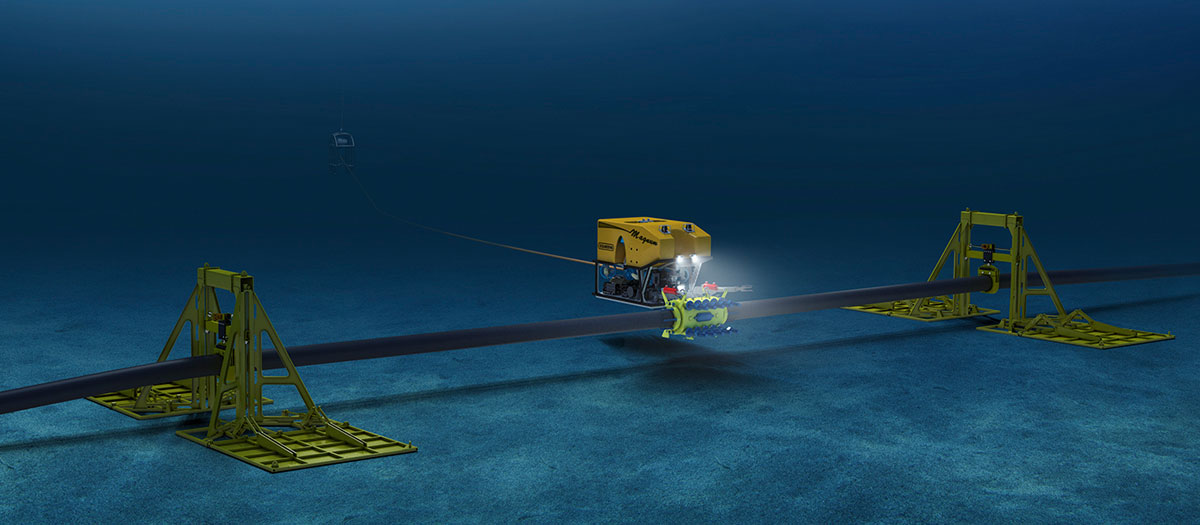
Subsea_Pipelines_and_Risers Ocean_Engineering
این کتاب درباره خط لوله و رایزهای زیر دریا تجهیزات ارتعاشات و گردابه آن می باشد.یادم مهندس پویا فلاح برای اولین در ایران موضوع مدل کردن ارتعاش و گردابها در لوله ها و رایزرهای را مطرح کرد یک نفر کره جنوبی تو این زمینه سر آمد بود مهندس فلاح روی کم کرد و چند تا مقاله ارایه کرد اون زمان بچه ها هم زحمت کشیدن توی هر زمینه کار شد هر جا هست امیدوارم موفق باشه من یادم اصلاحات فارسی نبود و فقط فرهنگ لغت دکتر چگینی بود که تو زمینه سواحل بیشتر واژه های ایشان بود. اصلاحات جدید در پایان نامه ها و تحقیقات ما به دست آمداست. برای مثال jack up سکو بالارو ، یا spud cans قوطی زبانه دار در شکلی که سکو بالارو که در پایین طرحی شده قوطی زبانه دار هم مشخصه در اولین فرست کاربرد فیلم (spud cans) در سکو بالابر برای شما در وبلاگ ام می گذارم انشاء ا... در آینده animation حمل و نقل و نصب آن هم در همین وبلاگ نمایش داده می شود.
All text and change the color to use to download it
Manifold چیست؟
Manifolds are
used to simplify the sub sea system, minimise the use of pipelines and
risers and optimize the flow of fluid in the system.





حمل و نقل سکو و کشتی به محل مورد نظر و عملیات بالانس کشتی و سکو/Transport SHIP & Platform to location & the balance

